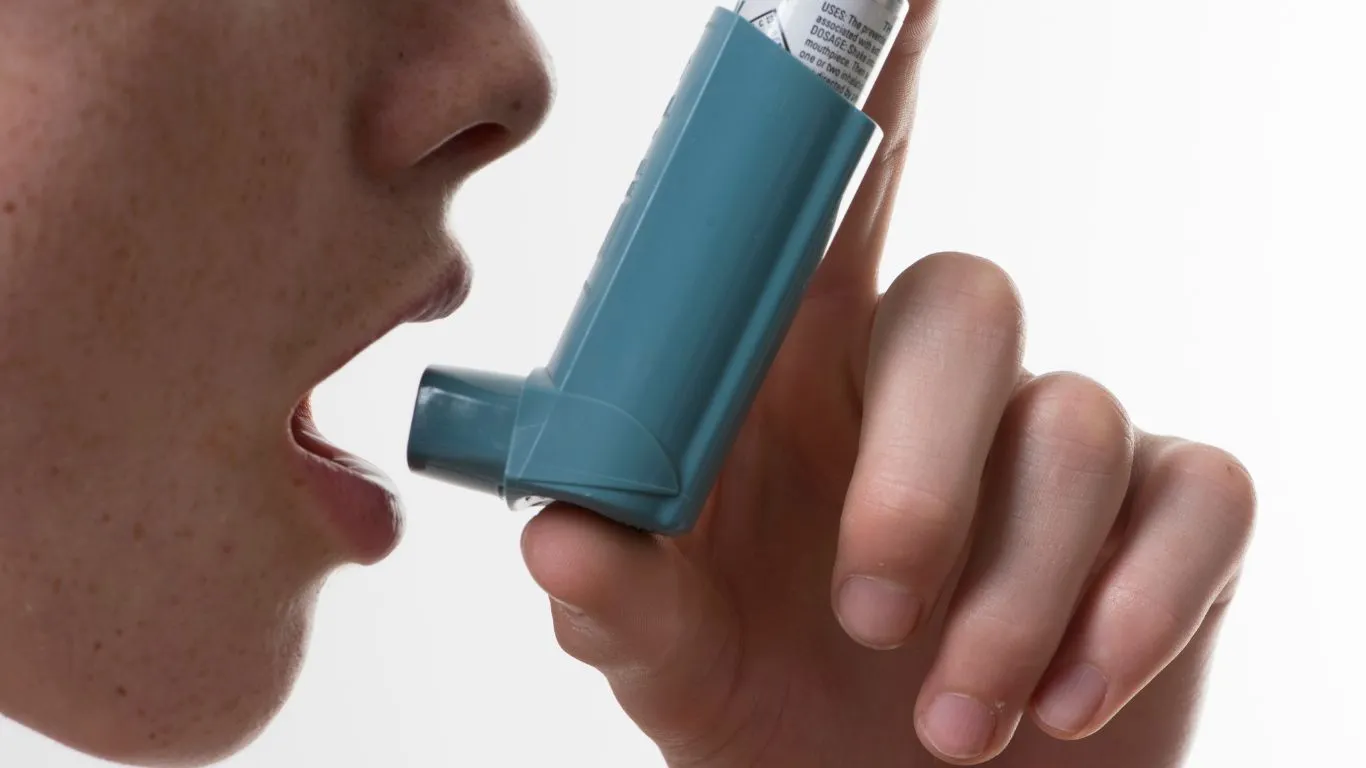Can Asthma Cause Shallow Breathing During Rest? What You Need to Know
If you’ve ever wondered, can asthma cause shallow breathing during rest—you’re definitely not alone. I’ve had so many patients ask me this over the years. As a pulmonary nurse practitioner, I’ve seen firsthand how asthma can sneak in quietly, even when you’re just lying on the couch or trying to fall asleep. It’s not always the classic wheezing and gasping that people imagine. Sometimes, it’s more subtle—like that frustrating sense that you’re not getting a “deep enough” breath. That’s where shallow breathing comes into play. And yep, asthma can absolutely be the culprit, even when you’re doing nothing more strenuous than scrolling your phone or watching TV.
What’s Going On With Breathing During Rest?

Understanding the Respiratory Chill Mode
When we’re at rest, our bodies typically shift into a relaxed state—heart rate slows down, muscles ease up, and breathing should become smooth and effortless. But asthma doesn’t always respect that calm. Even if you’re not actively wheezing, inflammation in the airways can still be simmering quietly in the background.
That low-level inflammation can narrow the airways just enough to create resistance, especially in the smaller bronchial passages. What that looks like for some people is shallow, unsatisfying breaths—you know, the kind where you feel like you want to take a big sigh, but can’t quite get there.
Not Every Asthma Symptom Is Loud
One of the trickiest things about asthma is how sneaky it can be. During rest, instead of full-blown attacks, people might just notice:
- A persistent tightness in the chest
- Short, rapid breaths that don’t feel “complete”
- A nagging sense of not getting enough air, even if oxygen levels look fine
- Subtle anxiety, especially at night
I can’t tell you how many times someone has come into my clinic saying, “I feel like I can’t breathe deep enough, but my lungs sound okay.” And more often than not, it’s asthma behaving quietly. It’s not always a dramatic episode—it’s this persistent, low-grade tightness that disrupts rest and makes you feel like something’s just… off.
Can Asthma Cause Shallow Breathing During Rest? Let’s Break It Down

The Role of Inflammation and Air Trapping
When asthma flares up—even slightly—it can lead to inflammation that makes airways narrower. This results in less room for air to move in and out. The body, being smart but not always helpful, starts compensating by taking quicker, shallower breaths. It’s trying to avoid the effort of deeper breathing, which might feel harder or cause discomfort.
Here’s what that might look like physiologically:
- Inflamed airways reduce airflow, especially in the smaller bronchi.
- Less airflow means less efficient gas exchange—so you feel like you’re not breathing deeply enough.
- To compensate, the respiratory rate increases, but tidal volume (the amount of air per breath) decreases. Boom: shallow breathing.
And yes, all of this can absolutely happen while you’re lying still—especially if you’re dealing with nighttime asthma or low-grade inflammation that hasn’t been fully addressed.
Real Talk: My Clinical Observations
Honestly, one of the more common things I hear from patients—especially those who are newly diagnosed—is, “I didn’t know this tight breathing feeling at night was asthma.” Some of them chalk it up to anxiety, stress, or even just being out of shape. But when we dig deeper and do some spirometry or nighttime pulse oximetry, asthma often ends up being the root cause.
It’s important to trust your body. If you’re consistently feeling like you can’t take a satisfying breath, even while you’re resting, it’s worth a deeper look—especially if you have a known asthma diagnosis or a family history.
How Triggers Hide in Plain Sight

Invisible Irritants That Cause Issues During Downtime
You’d be surprised how many asthma triggers are lurking in places we consider “safe.” During rest, we’re often indoors—on the couch, in bed, or in a climate-controlled room. That means potential exposure to:
- Dust mites in pillows and mattresses
- Pet dander from your snuggly little dog or cat
- Mold spores, especially in older homes or basements
- Strong-smelling laundry detergents or fabric softeners
- Dry indoor air from heating or air conditioning
Even if your asthma isn’t full-blown, these subtle triggers can inflame your airways enough to cause that “half-breath” sensation when you’re trying to rest. And because it’s not always obvious, many people don’t link the two. I’ve had folks completely change their nighttime symptoms just by getting a dust-mite-proof pillowcase. Wild, right?
Why Shallow Breathing Feels Worse at Night

The Body’s Night Mode Isn’t Always Friendly to Asthma
Ever notice how your breathing feels tighter or more restricted once the sun goes down? You’re not imagining things. One thing I always explain to my patients is that our body goes through natural rhythms—called circadian rhythms—that affect everything from hormone levels to how our lungs function. And unfortunately, for people with asthma, that rhythm can sometimes make symptoms worse at night.
Here’s what typically happens:
- Cortisol levels drop at night (cortisol is anti-inflammatory—less of it means more inflammation risk).
- Airways tend to be more reactive when the body is in rest mode.
- Lying flat can cause postnasal drip, which further irritates the airways.
- Allergens like dust mites are more concentrated in bedding and pillows.
So yeah, night time + asthma = potential shallow breathing, even without physical activity. One of my regular patients used to call it her “invisible nighttime asthma attack” because she would wake up not gasping—but feeling like she could only take baby breaths. That subtle sensation can be enough to disrupt your sleep and lead to a cycle of poor rest and more inflammation.
Does Anxiety Play a Role?
Definitely. And it’s not just “in your head.” Shallow breathing during rest—especially when it feels unexplained—can kick off a whole cascade of anxiety. And once that happens, the chest tightens, breathing becomes even shallower, and round and round you go. I’ve had patients who ended up in the ER thinking they were having a heart attack, only to find out that it was a combination of asthma and panic.
Now, that’s not to downplay anxiety—it’s very real and very physical. But in asthma patients, especially those with nighttime symptoms, it’s crucial to untangle what’s triggering what. Managing asthma better often helps reduce that panic response. And vice versa, calming the nervous system can help breathing feel less labored during rest.
How to Tell If Asthma Is Causing Your Shallow Breathing

Signs to Watch For
Sometimes asthma doesn’t show up as loud, dramatic wheezing or coughing. Instead, it shows up like a quiet ninja—just a sense that you’re not breathing fully. Here are a few things I’ve coached people to look out for:
- Waking up at night feeling short of breath or needing to sit up
- A tight chest sensation, especially when lying flat
- Increased breathing rate without obvious exertion
- More frequent use of rescue inhaler at night or during rest
- Breathing discomfort when in air-conditioned or very dry rooms
These signs can all point to asthma being behind the shallow breathing during rest. Keep a log. I always recommend jotting down when symptoms occur and what was going on around that time (foods, location, sleep position, air quality). This kind of info is gold when you’re working with your provider to nail down the triggers.
Diagnostic Tools That Help
There are a few simple tests we often run in the clinic to back up what patients are feeling:
- Spirometry: Measures how much air you can move in and out of your lungs and how fast.
- Peak Flow Meter: Handy at home—shows your daily lung performance. A drop often means inflammation is creeping in.
- Pulse Oximetry: Tells us your oxygen levels, especially helpful if you feel like you can’t breathe deeply but your levels are still “normal.”
I’ve seen so many people have that “ah-ha” moment after doing a simple spirometry test. Suddenly, it all makes sense why they’ve been feeling off—even if they’ve been told, “your lungs sound fine.” Sometimes you need to dig a little deeper to see what’s actually going on.
What You Can Do To Feel Better—Without Waiting for a Flare-Up

Practical Tips That Make a Real Difference
Managing shallow breathing linked to asthma doesn’t always mean waiting for it to get worse. Proactive steps can really improve your quality of life. These are some go-to strategies I share with my own patients:
- Use your maintenance inhaler as prescribed—even when you feel “okay.” It keeps inflammation in check long-term.
- Elevate your upper body while sleeping—even a 20-30 degree angle can relieve pressure on your diaphragm and reduce mucus buildup.
- Invest in hypoallergenic bedding—dust mites love your pillows. Don’t let them win.
- Keep bedroom air clean—HEPA filters, regular vacuuming, and ditching the scented candles can all help.
- Practice diaphragmatic breathing—belly breathing sounds cheesy, but it helps reset your nervous system and deepen breath cycles.
And most importantly, don’t minimize your symptoms just because they’re “not dramatic.” Subtle symptoms are still real symptoms. One of the biggest mistakes I see is patients waiting until they’re miserable before taking action. Trust your gut—and your breath. If something feels off, it probably is.
When to Seek Help: Knowing the Warning Signs

Don’t Wait Until It’s Critical
From years of experience working directly with people managing asthma, one piece of advice I always give is: don’t wait for things to get severe before seeking help. Shallow breathing during rest can sometimes be a gentle nudge from your body telling you, “Hey, something’s off.” But it can quickly escalate if left unchecked.
If you notice any of these signs, it’s time to get in touch with your healthcare provider right away:
- Difficulty speaking full sentences due to breathlessness
- Chest tightness that doesn’t improve with your rescue inhaler
- Blue or gray lips or fingertips (signs of low oxygen)
- Rapid breathing accompanied by dizziness or confusion
- Persistent cough with mucus that changes color
Remember, asthma symptoms vary a lot from person to person. What might feel manageable to one person could be a red flag for another. That’s why personalized care is key. When in doubt, call your doctor or visit an urgent care center. Your lungs will thank you.
Long-Term Asthma Management to Prevent Shallow Breathing Episodes

Personalized Care Plans Make All the Difference
In my years of practice, I’ve learned that asthma management isn’t a one-size-fits-all deal. It’s about building a tailored plan that fits your lifestyle, triggers, and medical history. A few things to keep in mind:
- Know your triggers: Whether it’s pollen, pet dander, or stress, identifying what sets off your asthma can help you avoid flare-ups.
- Stick to your medications: Maintenance inhalers aren’t just for flare-ups—they keep inflammation down and airways open.
- Regular check-ups: Your asthma can change over time. Follow-up visits let your provider adjust treatments before symptoms worsen.
- Use technology: Apps and devices that track peak flow or symptoms can help catch issues early.
- Stay active: Physical activity helps improve lung capacity—but always check with your provider about safe exercises.
From my own clinical experience, patients who engage actively in their asthma care report fewer episodes of shallow breathing and better overall quality of life. It’s empowering to understand your condition, recognize early warning signs, and take control.
Breathing Techniques and Lifestyle Hacks
Beyond medications, I always encourage patients to try breathing exercises and lifestyle tweaks. Things like:
- Diaphragmatic (belly) breathing to improve oxygen exchange and reduce panic-driven shallow breathing.
- Controlled coughing to clear mucus gently without causing airway irritation.
- Maintaining humidity in your living space—dry air can worsen airway irritation.
- Mindfulness and relaxation techniques to help manage anxiety that often accompanies asthma symptoms.
These small adjustments might seem simple, but they can add up to a big difference in how restful and comfortable your breathing feels at rest.
Final Thoughts on Asthma and Shallow Breathing During Rest
To circle back to the big question: can asthma cause shallow breathing during rest? The answer is a clear yes. It’s a symptom that often flies under the radar but can significantly impact your day-to-day life. If you’re experiencing this, know that you’re not alone, and there are plenty of tools and strategies to help.
From inflammation and airway reactivity to nighttime triggers and anxiety, many factors can play a part. The good news is that with proper care, monitoring, and lifestyle adjustments, you can breathe easier—literally and figuratively.
As a pulmonary nurse practitioner, I can’t stress enough how important it is to listen to your body, advocate for yourself, and work closely with your healthcare team. Your lungs are precious, and shallow breathing during rest is a sign worth paying attention to.
References
Disclaimer
This article is intended for informational purposes only and does not substitute professional medical advice, diagnosis, or treatment. If you experience persistent or worsening symptoms of asthma or shallow breathing, please consult a qualified healthcare provider promptly.

Bianca Nala is a compassionate Nurse Practitioner with a strong background in primary and respiratory care. As a health writer for Healthusias.com, she combines her clinical expertise with a talent for clear, relatable storytelling to help readers better understand their health. Bianca focuses on topics like asthma, COPD, chronic cough, and overall lung health, aiming to simplify complex medical topics without losing accuracy. Whether she’s treating patients or writing articles, Bianca is driven by a single goal: making quality healthcare knowledge accessible to everyone.





